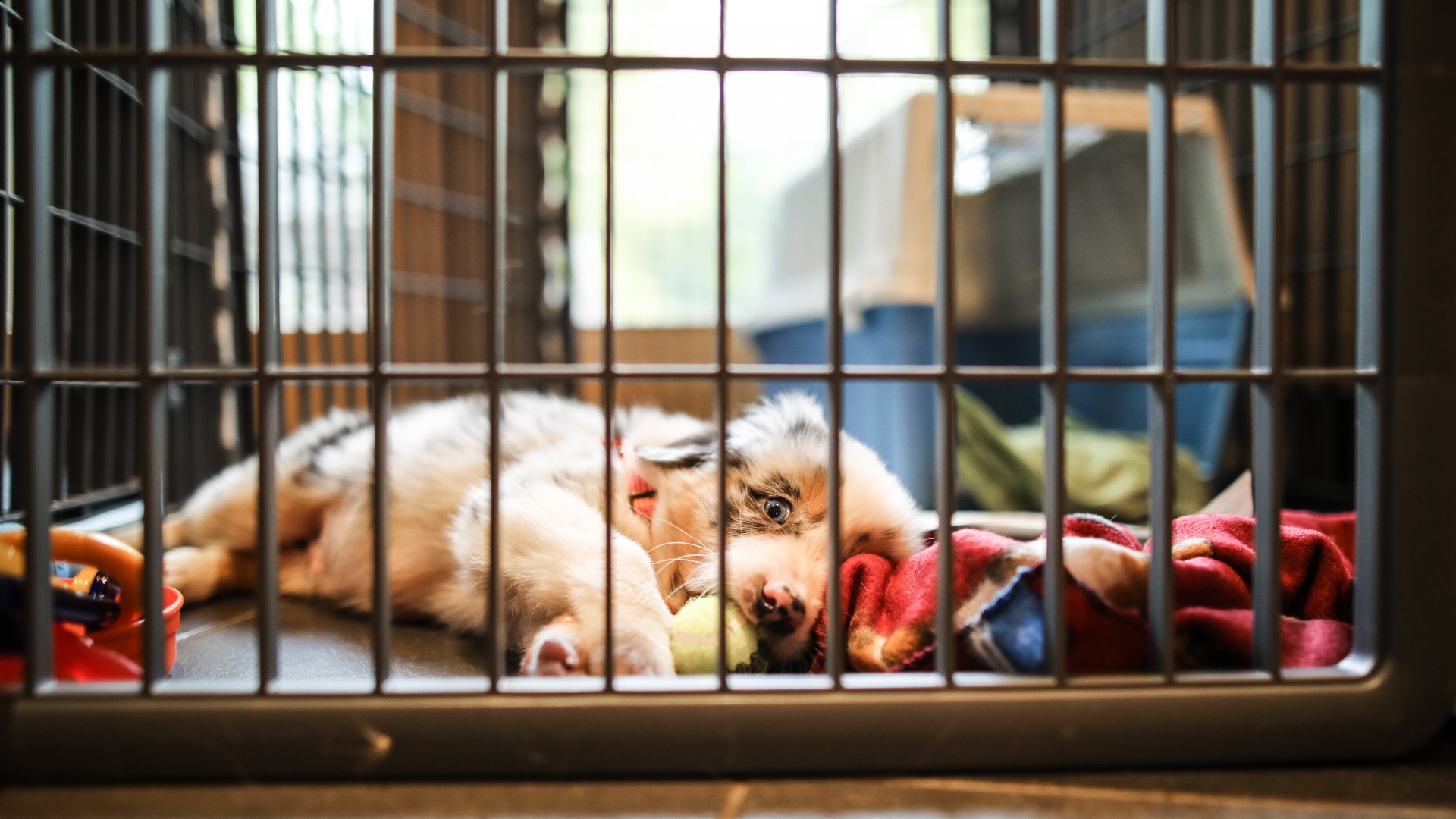
Disclaimer: Unless specifically stated, any expert comments quoted in this news piece have been taken directly from the Instagram post cited below.
When you first brought your new bundle of fluff home, it's likely that figuring out how to crate train a dog was high on your priority list.
But now that your little one has grown into a fully-fledged adolescent or adult, you may be wondering if it's okay to start transitioning them out of their crate and letting them free roam around the house.
Well, according to expert trainer Carolyn, founder of Good Dog Training, free roaming is ideal for dogs that don't do well in confinement and for calmer pups who have been taught how to handle freedom.
If you're thinking of weaning your dog off their crate, here's a few thoughts from Carolyn that you'll want to consider...
1. How destructive are they? "If you're meeting your dog's needs, leaving them with a few tasty chews, and setting them up for success, will they be destructive?," asks Carolyn.
"If you put the garbage can away, pick up shoes, close bedroom doors, will your dog be okay with a bone or tendon to chew on?
"If your dog is relatively destruction-free, try not crating them the next time you leave."
2. Is your dog house trained? "If your dog is house trained or you have a dog door, then it may be time to start weaning off the crate," Carolyn advises.
"If your dog is still pottying inside or marking on things when you're no watching, crating may be best for a bit."
When it comes to phasing out the crate, Carolyn says it's important to start slowly.
"Start by leaving your dog loose while you go pick up groceries. Did they do okay? Great! Try a bit longer next time.
"Did they struggle? Chew up the couch or pee on the floor? Let's try to set them up for success next time and reevaluate."
Carolyn adds that starting at night tends to be easier than starting during the day — and there's a good reason for that.
"When the house is dark and everyone is asleep, the dogs tend to chill out and sleep too," she explains. "You're also home to hear any 'I need to potty' cries or sounds of mass destruction."
When working to transition your dog from their crate to free roaming, try not to take an all or nothing approach as these things take time.
"You don't have to go from always crating to leaving your dog completely loose in the house all the time. You can try using baby gates to confine your dog to a larger area and see how they do," suggests Carolyn.
The only way you'll know how your dog will do out of their crate is to try it and see. Carolyn says that if you find they're struggling, that's a signal they're not ready yet and that's okay!
"Every dog is a bit different in how quickly they're able to progress to being loose in the house. But if you’re thinking about it, it may be worth just trying it. You might be surprised."







